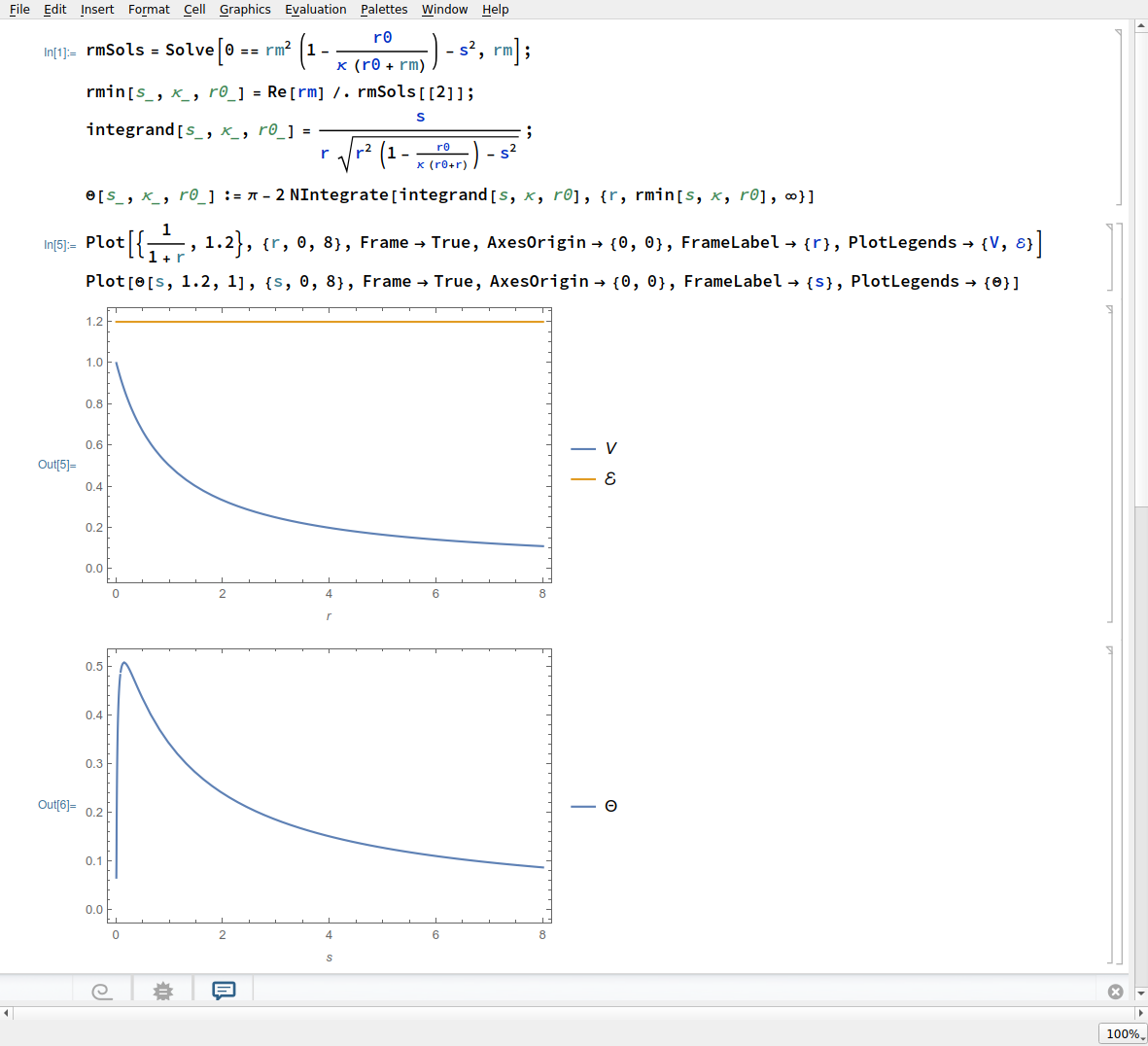To keep track of units, let me write the potential and the energy in the exercise as \begin{eqnarray} V &=& V_0 \frac{r_0}{r_0 + r} \\ E &=& \kappa V_0 \, , \end{eqnarray} where $r_0 = 1$ and $\kappa = 1.2$. By definition, the $z$ component of the angular momentum is $l = m r^2 \dot{\phi}$, but we may use the initial conditions, that is, the impact parameter $s$ and initial velocity $v_0$, to write \begin{equation} l = m s v_0 = m s \sqrt{\frac{2 E}{m}} = s \sqrt{2 E m} = s \sqrt{2 \kappa V_0 m} \, . \end{equation} The total energy is hence given by \begin{eqnarray} \kappa V_0 &=& E \\ &=& K + V \\ &=& \frac{1}{2} m \dot{r}^2 + \frac{1}{2} m r^2 \dot{\phi}^2 + V_0 \frac{r_0}{r_0 + r} \\ &=& \frac{1}{2} m \dot{r}^2 + \frac{1}{2} \frac{l^2}{m r^2} + V_0 \frac{r_0}{r_0 + r} \\ &=& \frac{1}{2} m \dot{r}^2 + \kappa V_0 \frac{s^2}{r^2} + V_0 \frac{r_0}{r_0 + r} \, . \end{eqnarray} When $r = r_m$ we have $\dot{r} = 0$. From the previous equation we then find an equation for $r_m$, \begin{equation} 0 = r_m^2 \left[ 1 - \frac{r_0}{\kappa \left( r_0 + r_m \right)} \right] - s^2 \, . \end{equation} With symbolic solving software you can find the solutions for this equation and single out the real and semi-positive root, for the values of $\kappa$, $r_0$ and $s$ of interest. We end up with an expression for the scattering angle $\Theta$ of, \begin{equation} \Theta = \pi - 2 \int_{r_m}^{\infty} \frac{s \, dr}{r \sqrt{r^2 \left[ 1 - \frac{V}{E} \right] - s^2}} \, , \end{equation} of the form \begin{equation} \Theta \left(s, \kappa, r_0 \right) = \pi - 2 \int_{r_m\left(s, \kappa, r_0 \right)}^{\infty} \frac{s \, dr}{r \sqrt{r^2 \left[ 1 - \frac{r_0}{\kappa \left( r_0 + r \right)} \right] - s^2}} \, . \end{equation} Notice that the denominator in the integrand vanishes when $r = r_m$. Mathematica seems to handle this well:

